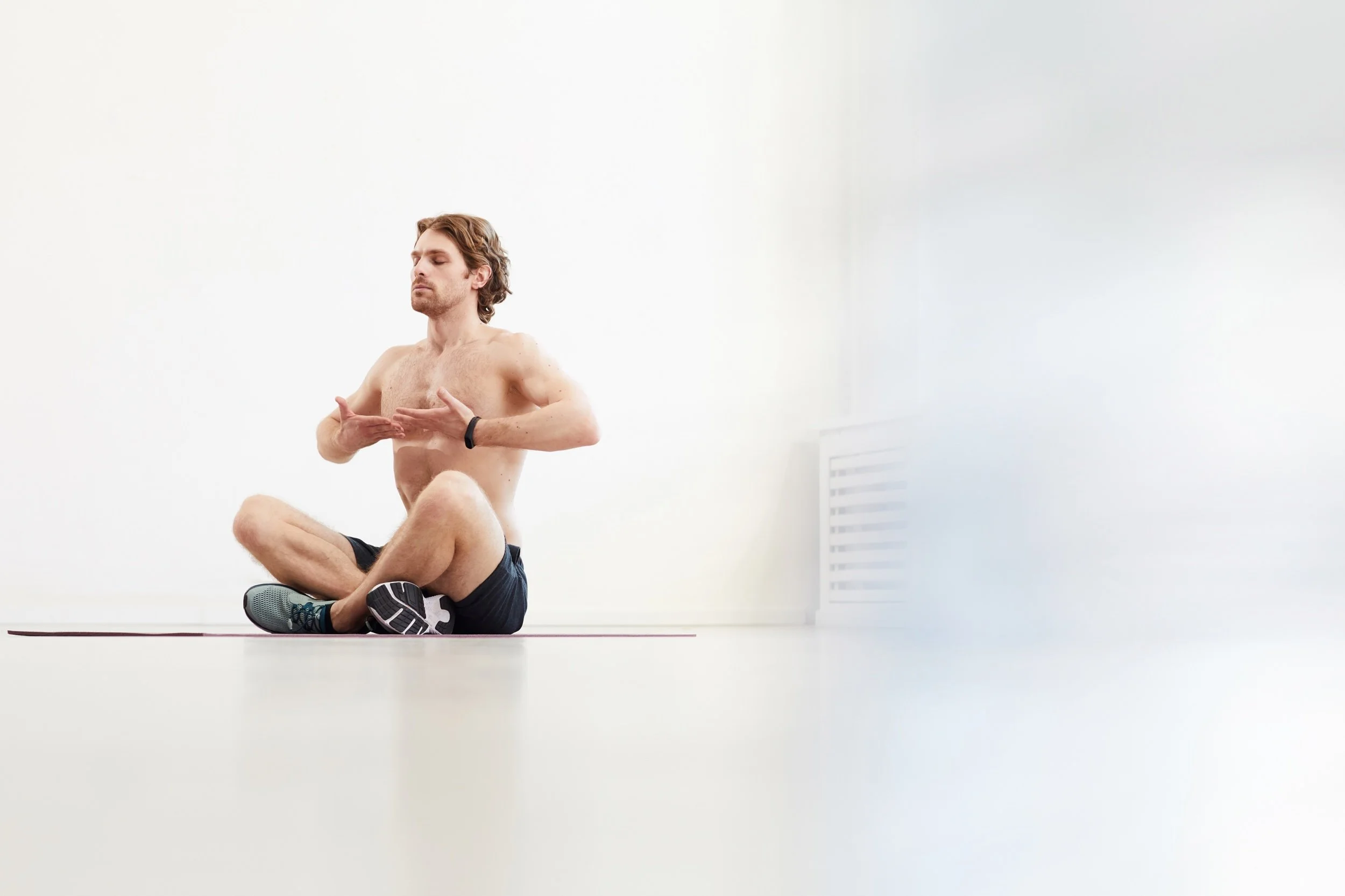Covid-19 Dragged Breathwork Into the Mainstream.
Introduction: The Importance of Deep Breathing
When I first started teaching my clients about the importance of breathwork, it was a tough sell. While some immediately embraced the concept, others outright rejected it. After all, it's always there: whether awake or asleep, we take 20,000 per day, or 14 to 20 breaths every minute. Still, the pandemic has taught us that this is an opportune time to take every breath seriously.
Early in the pandemic, we heard of more infected and many who have died since from the novel coronavirus, the spiky molecule with a snarky attitude that has been breathtaking. We rely on more than 600 million breaths in our lives, even as most of us give it zero thought. Yet, breath-work has now entered the mainstream, and there's no better time to be mindful of the device that is our rib cage and lungs and their sacred jobs. Finally, as celebrities like Paltrow and Bieber have embraced the Win Hof method, breathwork has entered our lexicon and pop culture.
The COVID-19 pandemic slammed into us when many were seemingly unaware of the complex science of breathing and its abundant health benefits. We know that mindful breaths soothe anxiety, pull us out of depression, and boost our mood. And while studies cite that deliberate breathing practice bolsters this natural symbiosis, scientific literature on why conscious breathing has such a massive effect on our mental and physical health has never been thoroughly reviewed.
5 Amazing Physical Benefits of Practicing Deep Breathing Techniques Everyday
Beyond the pandemic, what's with all the focus on our breath? Research shows two "pacemaker" cells in our body: one located in the heart and regulates our heartbeat and one in our brain that governs our breath. Our heart's pacemaker works via the autonomic nervous system, meaning we don't control it consciously. The second system that regulates our breath, located in our brain, sends signals to our spinal cord and skeletal muscles as we expand our rib cage and open our lungs. The cluster of cells within our brain allows breathing to be voluntary or involuntary. You can dive underwater and hold your breath, for example.
More studies show that our breaths affect our emotions and other health systems. New research from the Wyss Institute at Harvard University has revealed that this constant pattern of stretching and relaxing does even more—it generates immune responses against invading viruses, such as COVID-19.
Deep breathing can balance blood pressure and release stress hormones from your body.
Deliberate breathing practice allows us to spend more time in deep sleep.
Focused breaths will reduce PTSD and feelings of trauma
Some breathing techniques will build a more robust respiratory function when practiced proactively.
Mindful breathwork will create a resilient immune system.
5 Amazing Emotional Benefits of Practicing Deep Breathing Techniques Everyday
Long and slow breaths reduce stress and anxiety by lowering heart rate and blood pressure levels and help to alleviate depression as it releases endorphins in the brain. Twelve weeks of sustained practice has a measurable decline in depressive symptoms and clinical improvements.
Conscious Breathing exercises can help you become more focused, which leads to better decision-making skills.
Decrease in addictive behaviours
Allowing emotional scars to heal and a better outlook on life
Contentment and joy
Research
A 1991 study by Pierre Phillipot gives us fascinating revelations of how different emotions connect to specific breath patterns. He found that imagining certain feelings like fear, sadness, or happiness resulted in noticeable changes in heart rate. His group found that each emotion corresponded with a specific breath pattern. Interestingly, participants confirmed that their feelings correlated with what the researchers observed. The geek in me finds that amazing! How we use our breath can impact our physical and emotional wellness.
How to Practice Deep Breathing Exercises at Home
Breathwork requires focus, so it can take time to develop your ability to concentrate on the techniques. If you're distracted by noise and happenings around you during a breathwork session, breathwork may not be as effective.
The Phillipot research discussed earlier shows that our brains aren't particularly good at differentiating between real and fake. I often ask my clients to take advantage of that. Here are a few breathing techniques to practice at home:
Decompression Breathing
Part of the Foundation Training modality, Decompression Breathing has a steep leaning curve. However, when practiced regularly, Decompression Breathing has a myriad of health benefits, including eliminating back pain. We teach Decompression Breathing from a variety of positions - standing, kneeling, laying prone or supine. Learn more about Foundation Training Decompression Breathing here or contact me for a complimentary session.
Alternate Nostril
Alternate Nostril Breathing, also known as Nadi Shodhana Pranayama in Sanskrit, this breathing technique is excellent for relaxation, but should be avoided if you are unwell.
Start by getting comfortably seated or laying prone
Exhale, then gently close your right nostril with your right thumb
Inhale through your left nostril, and then close your left nostril with your right middle finger
Release your thumb and exhale through your right nostril
Inhale through your right nostril and then close this nostril
Release your middle finger to open your left nostril and exhale
Repeat up to 5 minutes and finish as you exhale through the left side
Coherent Breathing
Often referred to as "coherence", practice taking five full breaths per minute (or inhaling and exhaling for five counts). This breathing technique is particularly effective when used with Heart Rate Variability (HRV) monitoring.
Start by getting comfortably seated, laying prone or supine
Inhale for a count of 5
Exhale for a count of 5
Continue for a few minutes
Box Breath
Often referred to as "box breathing" or "tactical breathing," this breathing technique can be practiced at any time and will re-center and focus the mind. Box breaths are effective before taking big decisions.
Sit comfortably, stand, or lie down on your back
Breathe in counting to four slowly. Expand your rib cage, and feel the air enter your lungs
Exhale slowly by blowing air through your pursed lips for a count of 4
Hold your breath for a count of 4
Repeat all steps 1 to 4 until you feel re-centered and alert
Four-Seven-Eight Breathing
You can do the 4-7-8 either as a sleep aid or during the day when you want to feel calmer. Dr. Weil, inventor of the technique advises performing the method regularly and consistently – ideally twice a day – to see long-lasting and life-changing results:
Breathe in through your nose for a count of four seconds.
Hold your breath for seven seconds.
Exhale for eight seconds, making a "whoosh" sound through pursed lips
Repeat up to four times, twice per day.
Conclusion: Why You Should Get Started with Deep Breathing Today, and Its Lofty Health Benefits
While breathing exercises and awareness can be essential to maintaining your emotional wellness, it is vital to take a holistic approach. In addition to breathing exercise, you may want to consider your training, diet, sleep, and overall outlook to promote and maintain your wellness.

